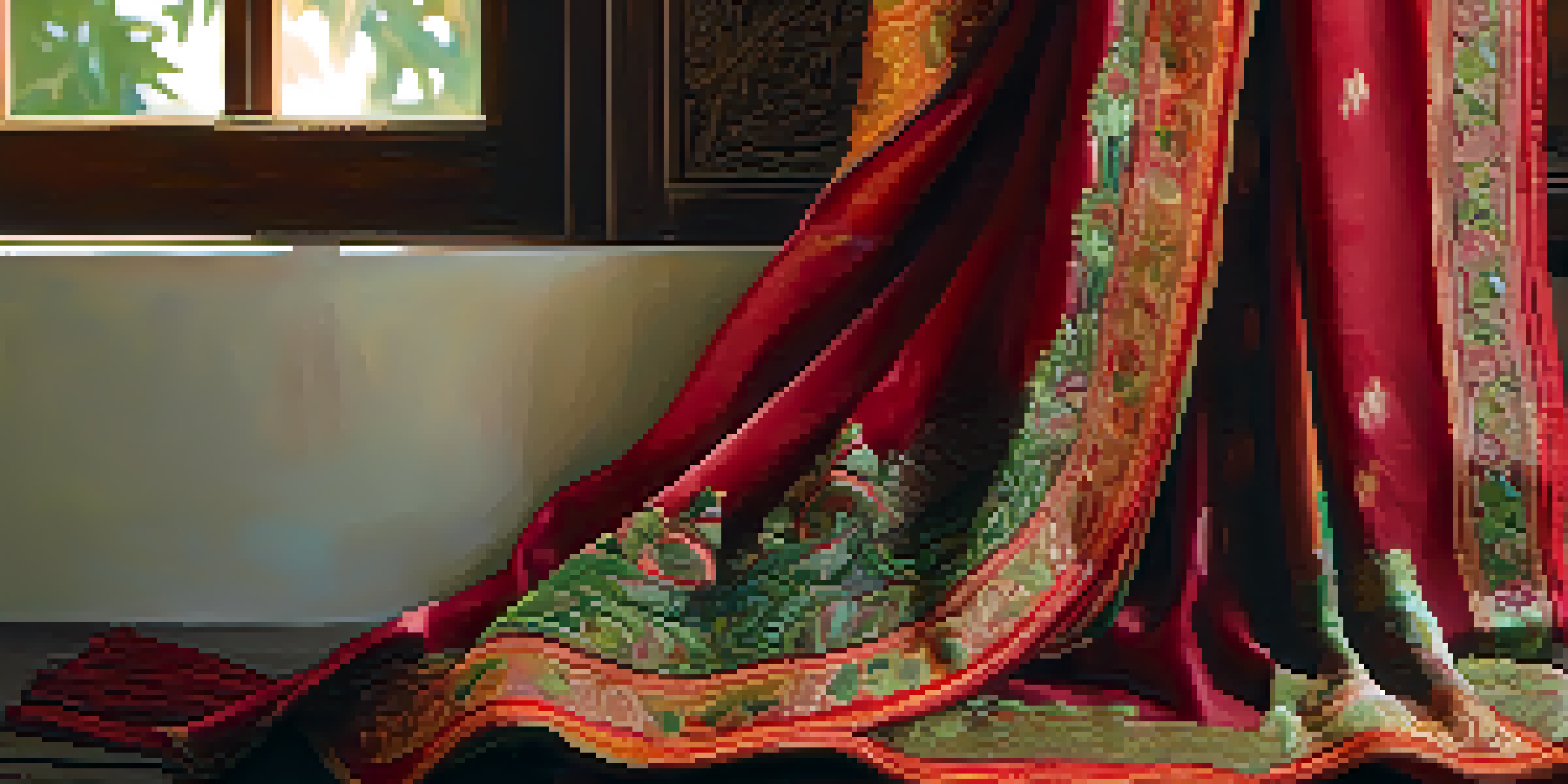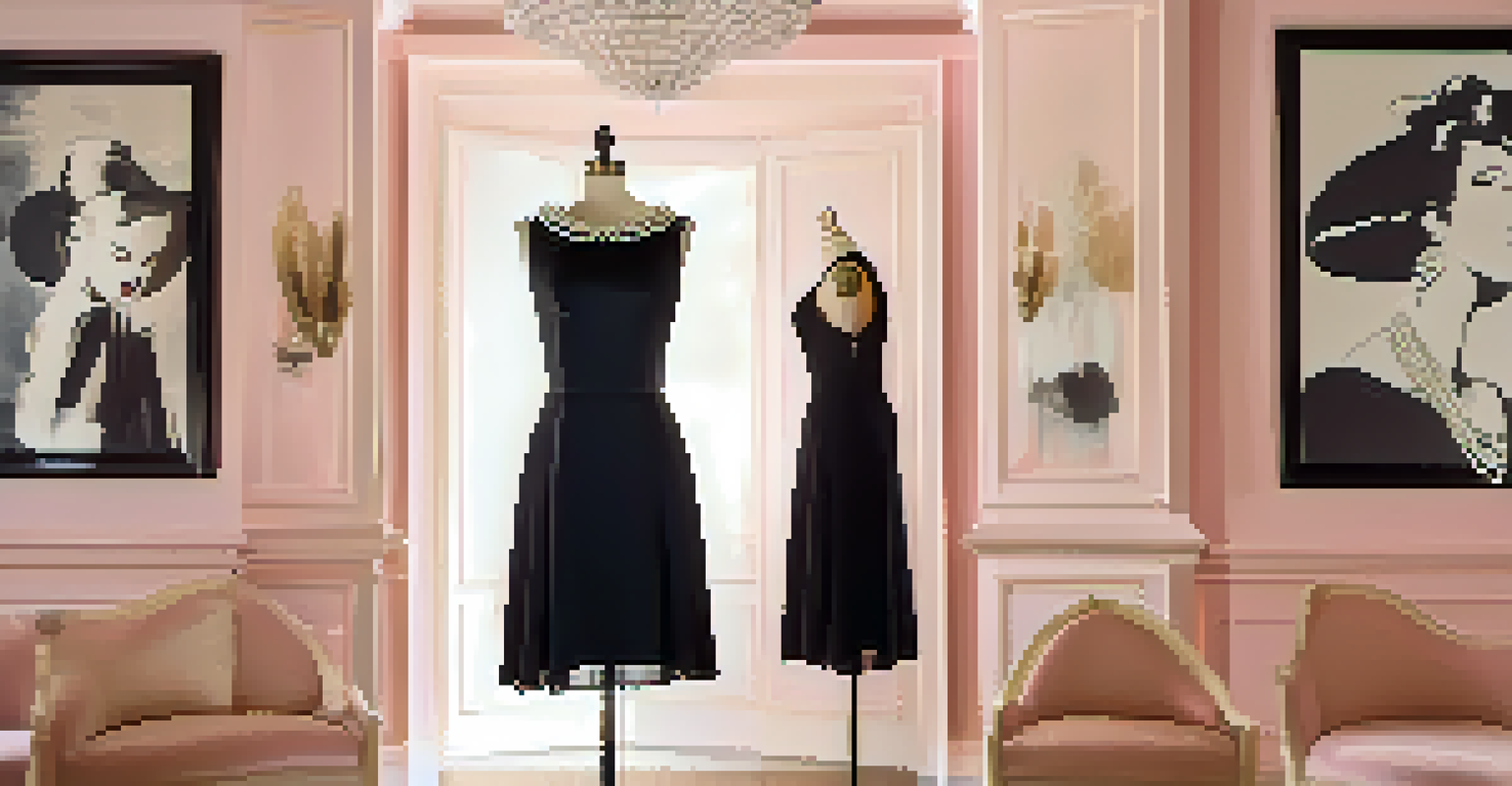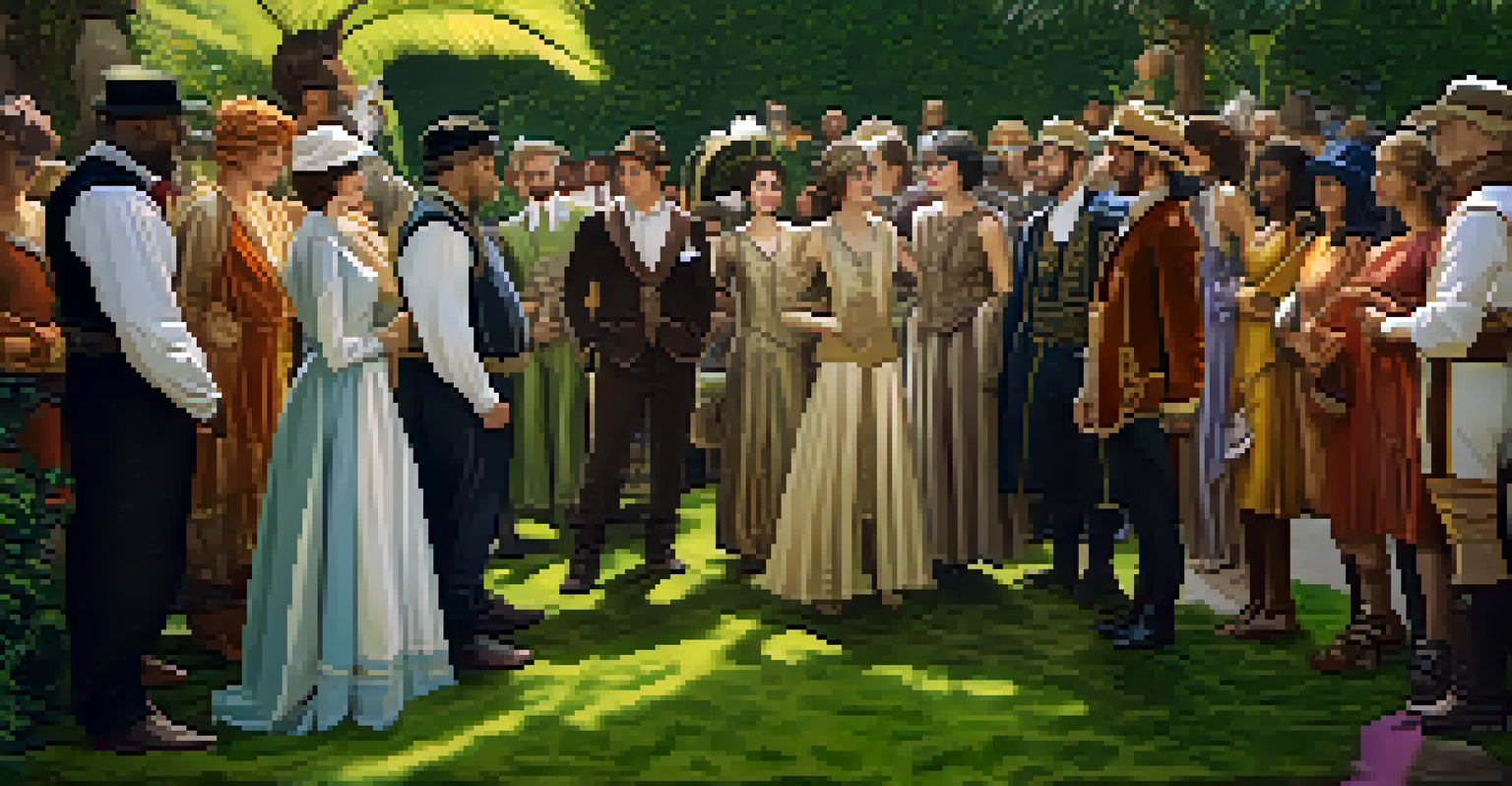Fashion in Film: A Look at Costume Design's Cultural Significance

Costume Design: More Than Just Clothes on Screen
Costume design in film goes beyond mere aesthetics; it tells a story. Each piece of clothing can signify a character's personality, status, and relationship to others. Think about how a superhero's tight suit conveys strength, while a historical figure's attire reflects their era and social class.
Clothes aren’t going to change the world. The women who wear them will.
For instance, in 'The Devil Wears Prada', the transformation of Andy Sachs through her wardrobe is a visual representation of her character development. As she evolves, so does her style, emphasizing the connection between fashion and identity.
In this way, costume design serves as a silent narrator, adding depth to the storyline and enriching the viewer's understanding of the characters' journeys.
Cultural Context: Reflecting Society Through Fashion
Costume design is a mirror of the society in which a film is set, often reflecting current trends, cultural norms, and historical contexts. For example, the flapper dresses in 'The Great Gatsby' transport us back to the Roaring Twenties, encapsulating the spirit of the age.

By incorporating cultural elements into wardrobe choices, filmmakers can draw audiences into a specific time and place, making the narrative more relatable and immersive. Think of how the vibrant saris in 'Slumdog Millionaire' depict the rich diversity of Indian culture.
Costume Design Tells a Story
Costume design transcends aesthetics, serving as a visual narrative that reflects characters' personalities and development.
Thus, costume design becomes a powerful tool in bridging the past and present, allowing viewers to connect with the film on a deeper level.
Iconic Costumes: Fashion That Makes a Statement
Certain costumes become iconic, transcending the film to become cultural symbols. The little black dress worn by Audrey Hepburn in 'Breakfast at Tiffany's' is not just a piece of clothing; it's a statement about elegance and sophistication.
Fashion is the armor to survive the reality of everyday life.
These memorable outfits often spark trends and influence real-world fashion, demonstrating how film can shape public perception and style. When you think of 'Star Wars', it's hard not to picture Darth Vader's imposing black armor, which has become synonymous with villainy.
Such costumes resonate beyond the screen, becoming part of our cultural lexicon and inspiring countless interpretations in everyday life.
Costume Designers: The Unsung Heroes of Film
While directors and actors often grab the spotlight, costume designers play a crucial role in the filmmaking process. They conduct extensive research and work closely with directors to ensure that every outfit aligns with the film's vision.
For instance, Colleen Atwood's work in 'Alice in Wonderland' showcases her ability to blend fantasy with fashion, creating whimsical looks that enhance the surreal narrative. Her meticulous attention to detail illustrates the dedication required to bring characters to life.
Fashion Reflects Cultural Identity
Costumes in film mirror societal norms and cultural contexts, helping to create a more immersive and relatable narrative.
Recognizing the artistry behind costume design not only honors these professionals but also deepens our appreciation of the film as a whole.
Fashion as a Reflection of Identity in Film
In film, fashion often serves as a means of expressing identity, whether it's personal, social, or cultural. Characters use their clothing choices to communicate who they are and how they wish to be perceived by others.
For example, in 'Clueless', Cher Horowitz's trendy outfits are not just about fashion; they reflect her privileged lifestyle and cultural capital in Beverly Hills. Her wardrobe choices become integral to understanding her character and her interactions with others.
This interplay between fashion and identity challenges viewers to think about their own clothing choices and the messages they convey in their lives.
The Evolution of Costume Design in Cinema
Costume design has transformed dramatically since the early days of cinema. The introduction of color film allowed for more vibrant and expressive designs, while technological advancements have made it possible to create costumes that are more elaborate and imaginative.
Movies like 'Avatar' showcase groundbreaking costume design that combines technology with creativity, immersing viewers in otherworldly environments. This evolution also reflects changing societal attitudes towards fashion, pushing boundaries and redefining norms.
Iconic Costumes Shape Public Perception
Certain costumes become cultural symbols, influencing trends and shaping how fashion is perceived in everyday life.
As cinema continues to evolve, so too does the role of costume design, adapting to new artistic movements and cultural shifts.
Cultural Significance: The Impact of Costume Design
The cultural significance of costume design in film cannot be overstated; it shapes perceptions and influences societal trends. By portraying diverse cultures and identities, filmmakers can foster greater understanding and appreciation among audiences.
Films like 'Black Panther' have highlighted the importance of cultural representation, showcasing traditional African attire alongside modern fashion. This blend not only celebrates diversity but also challenges stereotypes, encouraging conversations about identity and heritage.

Ultimately, costume design plays a pivotal role in cultural storytelling, making it an essential aspect of cinema that resonates far beyond the screen.
Conclusion: The Lasting Legacy of Costume Design
As we explore the intersection of fashion and film, it's clear that costume design holds a unique place in storytelling. It shapes characters, reflects cultural contexts, and sparks conversations about identity and society.
The legacy of costume design continues to impact both the film industry and the fashion world, inspiring new generations of designers and filmmakers. By understanding its significance, we can appreciate the artistry that goes into creating the visual narratives we enjoy on screen.
In essence, costume design is not just about clothing; it’s about crafting a lasting impression that lingers long after the credits roll.